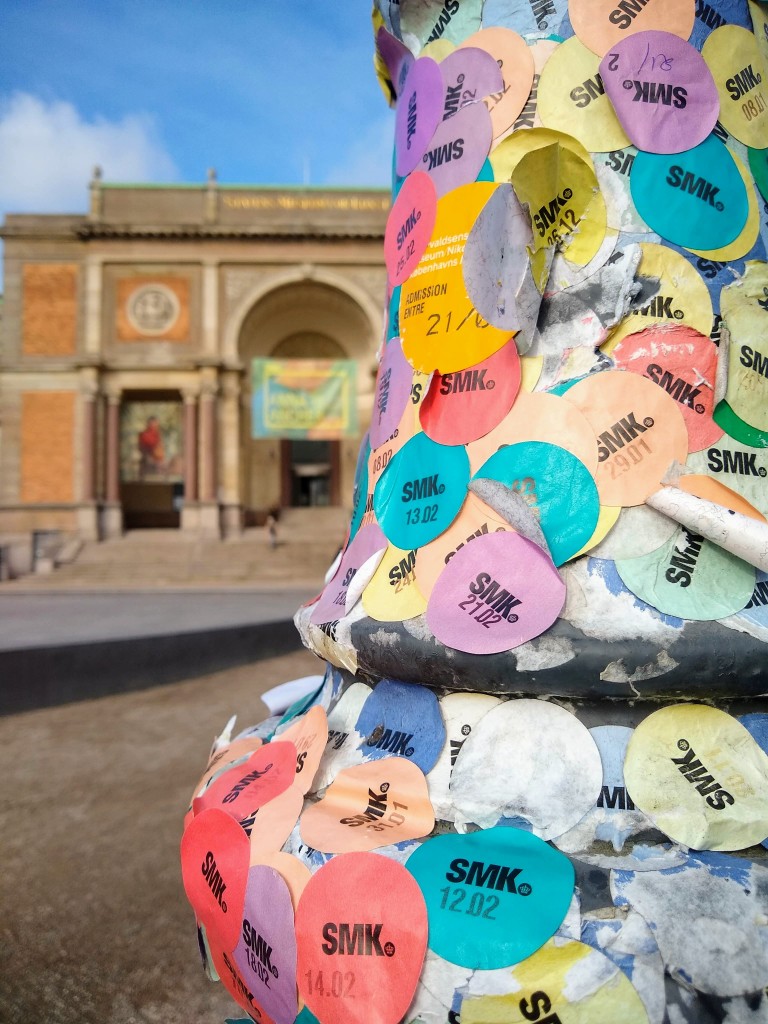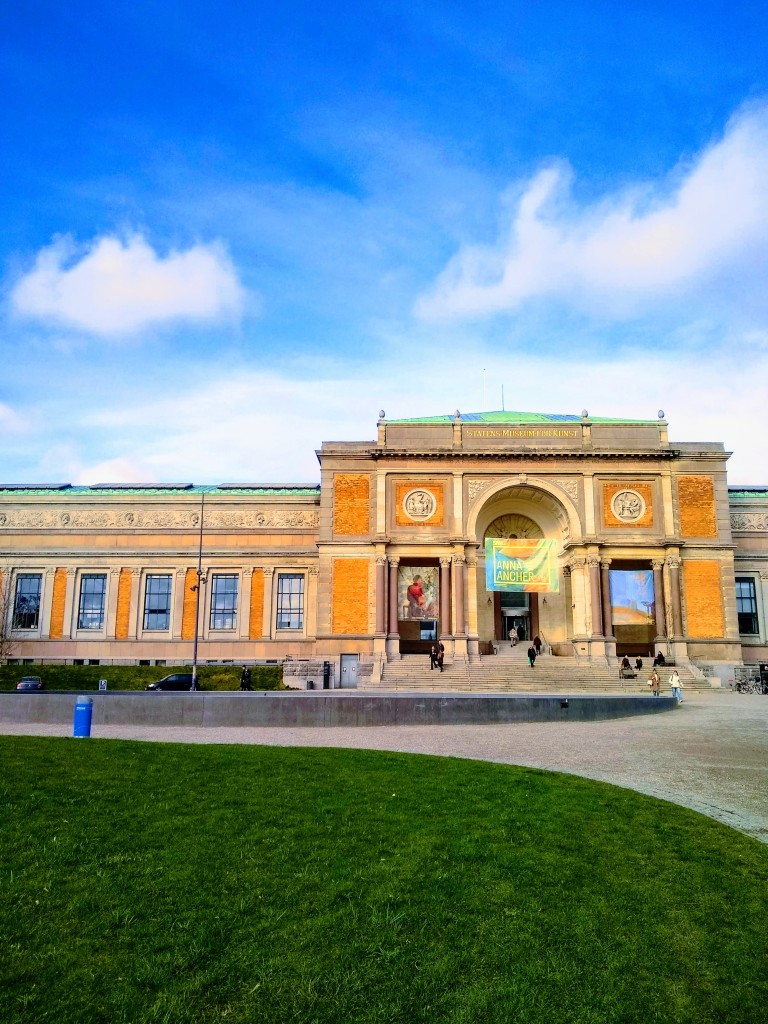It was a hazy week–one with a lot of long naps and long walks and microwaved popcorn (which is dirt cheap at ALDI, and I just discovered where to pop it in the folkehøjskole common building). Most notably, and maybe frighteningly to some of my peers: I didn’t travel anywhere outside of Denmark.
Yesterday capped off the first of DIS’s two “travel weeks”, which are set aside for long study tour field trips for core courses. If you’re not traveling, you have a week off to either independently travel or–to steal from the DIS website–“enjoy down time in Copenhagen”. Since I’m not due for a study tour til March and deliberately made no travel plans, I went with door number three.
I felt out of place when people rolled suitcases into class, or traded names in rapid-fire small talk: Paris! Rome! London! I also kept thinking of a quote I’d read for class from source of angst/new friend? Søren Kierkegaard, whose writing has this uncanny ability to apply exactly to whatever I’m thinking about:
“This rotation…is based on an illusion. One is tired of living in the country, one moves to the city; one is tired of one’s native land, one travels abroad; one is europamude [tired of Europe], one goes to America, and so on…”
–Kierkegaard, writing as the character “A”, in Either/Or
Before the real philosophy students come for me, yes, there’s more going on in this passage than that–for one, it’s attributed as part of a bundle of letters that Kierkegaard, writing as another character, found in an old desk. (I know–I get lost regularly in this text.) And I don’t want to look down on anyone for traveling on breaks–they’re breaks! Go forth and wander! Cry at a building you’ve waited your entire life to see! Get a sunburn!
But while I’m in Denmark this semester, it’s my goal to avoid the pressure of jumping in a “rotation” between countries on the weekends, and to be really here–to get a sense of place (not to rip from a popular DIS course) in Copenhagen and Roskilde. I want to learn from the rest of the country, too; there’s so many more train-side views and old turrets on the way to mainland cities like Aarhus. Not to mention the ongoing list of beaches, biking trails, and wildlife preserves I’m hoping to check out when the weather gets nicer this spring.

Even just staying here last week with no classes, I started noticing things, sensing rhythms–a micro-hailstorm on the train commute into the city; a rainbow on the one home. I could be hallucinating, but by last Friday, the sky was light at dinner time, and the air was March-fresh instead of bracing.
To kick off the break, I went to a three-in-one concert Friday night as part of Copenhagen’s JOURNEY music festival. With a student discount, I got to sample folk (Dirt Bike), electronic (Vegyn), and indie ((Sandy) Alex G) artists. Of the three acts, (Sandy) Alex G, representing my college home state of Pennsylvania, was the only one I’d heard before, and was without a doubt my favorite of the night. I loved that I could feel his songs in the echoes through the floor and the drum reverberations in a way that I couldn’t in my bedroom, headphones on.

Vegyn 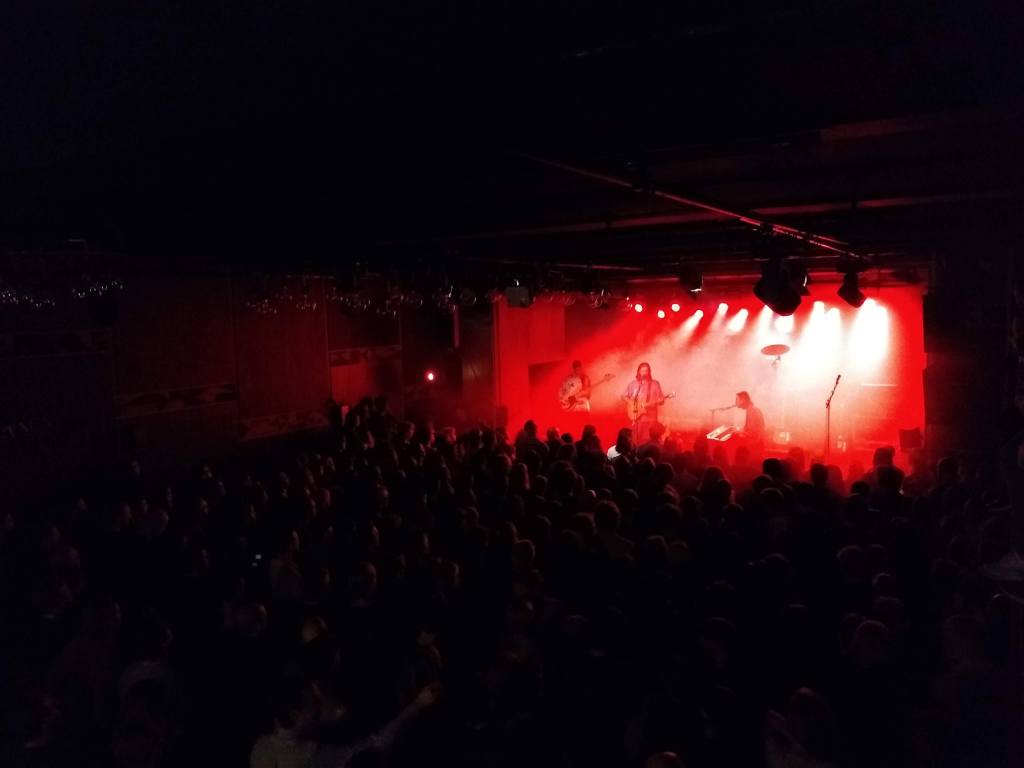
(Sandy) Alex G
Copenhagen Through my Dad’s Eyes
The real reason I wanted to stay in town this break–besides my goal to stay present–stepped off a flight early Saturday morning. My dad came to visit for the first half of the break, marking his first trip beyond North America, and I was so excited to see him and play tour guide. Dad’s first Copenhagen impressions? The raised cycling lanes (he bikes as well), wide use of English, and the honor system that train swipe-ins run on (which he thought Americans would completely take advantage of).
Taking Dad around the city made me realize how much of Copenhagen I forget I know, even after living here for two months. When I have to hit Google Maps to find an obscure side-street shop–or on the days where I only have time to go from the train to class and back–I feel like I haven’t seen enough. But tracing a route from up by Kongens Nytorv, where I had my “scavenger hunt” for Danish class, to Nyhavn, to the Little Mermaid…I saw all the pieces fall together. By Sunday night, Dad had crushed his daily step count record.

My dad has an eye for craft in everything, and that made walking around Copenhagen with him so much more meaningful, especially at places I’d visited before. He’d get up close to a chair or a cabinet in the Designmuseum and marvel at the shaping of the wood, at how long it had been preserved. On the pathway outside the Round Tower, he pointed out strips of metal that had been inlaid between the bricks, asking if I knew what they were. (I still have no idea. Guess that’s something I have to find out next week.) Everywhere we went, he’d catch something I might’ve missed–the tusk-like shape of the stock exchange spire; the layout of a train station; the notes of flavor in smørrebrød sandwiches.

We visited favorite student hangouts, from The Living Room (the cafe with the dim lower space where I unwind and do homework) to Jagger (a new favorite Danish chain–sorry, Max Burger–with a killer pulled-pork burger). Then on Monday, we ventured out to try the new-to-me, including Den Blå Planet, an aquarium one metro stop away from the airport. Highlights: a wraparound tank creating the illusion that you’re swimming under hammerhead sharks and rays, and a sauna-esque rain forest room with a full tank of piranhas.
Trying to settle on where to go after the aquarium, we learned that nearly every sight to see in Copenhagen is closed on Monday–to the same extent that things are on Sundays in some parts of the United States. The challenge to locate something that was either open, or didn’t shut down at 4pm, led us to the Museum of Copenhagen, a place I’d starred on my map but didn’t know much about. What a great surprise find: inside is a story of the city unfolding across three floors, starting in ancient times and moving to royalty before the present. The treat is the uppermost floor, featuring a massive model of the city where you can pick out each individual landmark and train station.

Rockin’ In Roskilde
We set aside Tuesday to tour my Danish hometown, starting but twenty feet away from my dorm at the RAGNAROCK museum of pop, rock, and youth culture. We almost didn’t make it out at all because of the massive wall of headphones, each one playing songs from a different era of Danish music: jazz in the 20s, Beatles-inspired groups in the 60s, electronic in the 90s. I wish the full collection was available as a playlist!
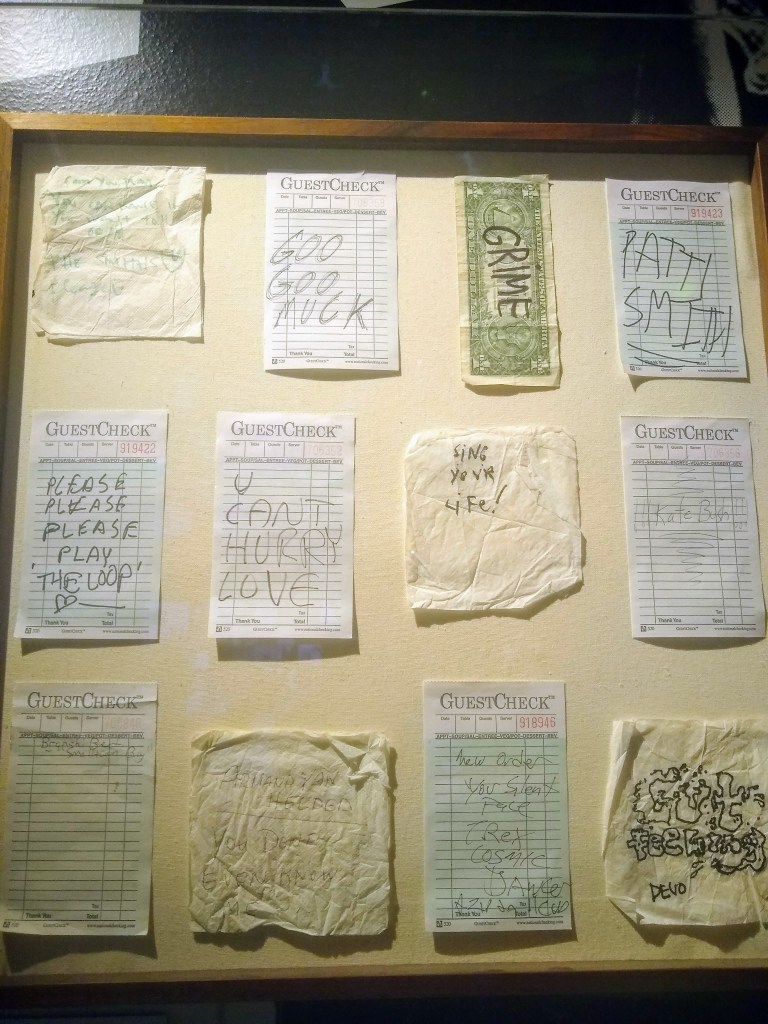
Old DJ requests! I’ll take “U [sic] Can’t Hurry Love“. 
Dad, about to get sucked in by a literal Wall Of Sound
RAGNAROCK is uniquely interactive–there’s a station to mix your own stage lighting, and one where you can follow along to videos of rave dances or the Twist. That last one produced some blackmail-worthy video of me that I’m sure will be brought out at our next extended family reunion. A game is set up in booths around the exhibits where you can create your own rock band; by scanning your pass from room to room, you check in on their rise and fall. Unfortunately, Dad’s band Love Brigade was plagued by scandal before they could hit the mainstream.
In a blow to our America-centrism, the entire second floor was devoted to an exhibit for a Danish 70s band called Gasolin that neither I nor Dad (with his prolific rock knowledge) had ever heard of. The walls were filled with accolades: the defining band of their generation! More popular than ABBA! It just goes to show that there’s an entire world of music beyond what we both grew up with. Turns out that Gasolin rock pretty hard, too–look out for them on our summer family beach playlist.
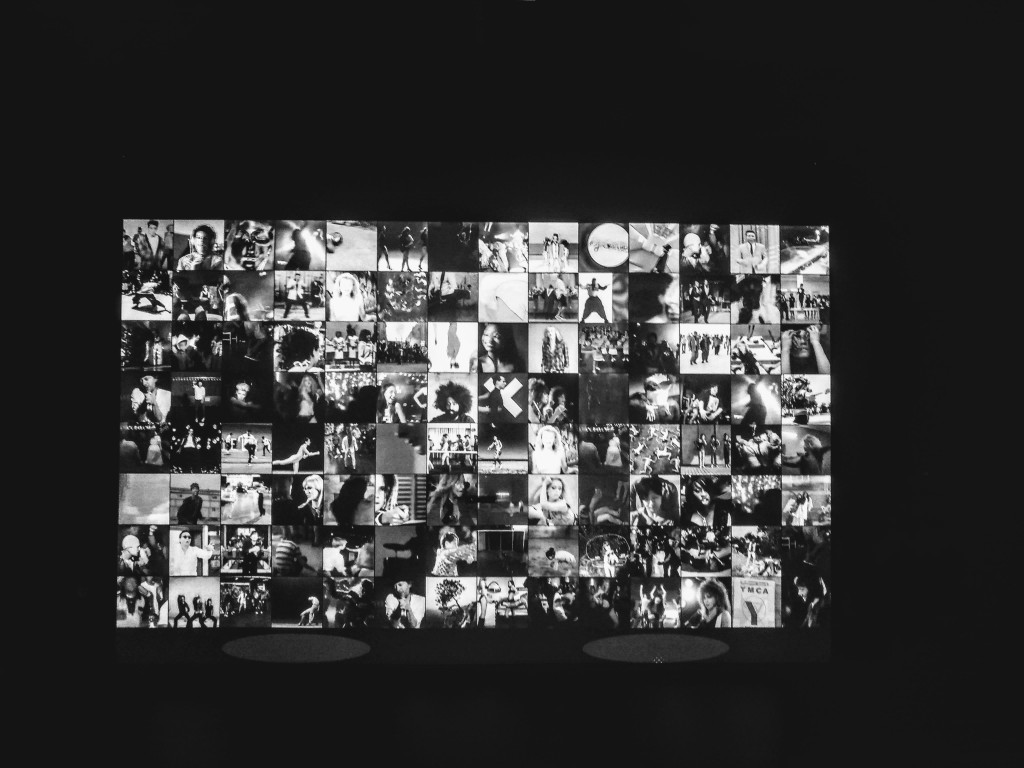
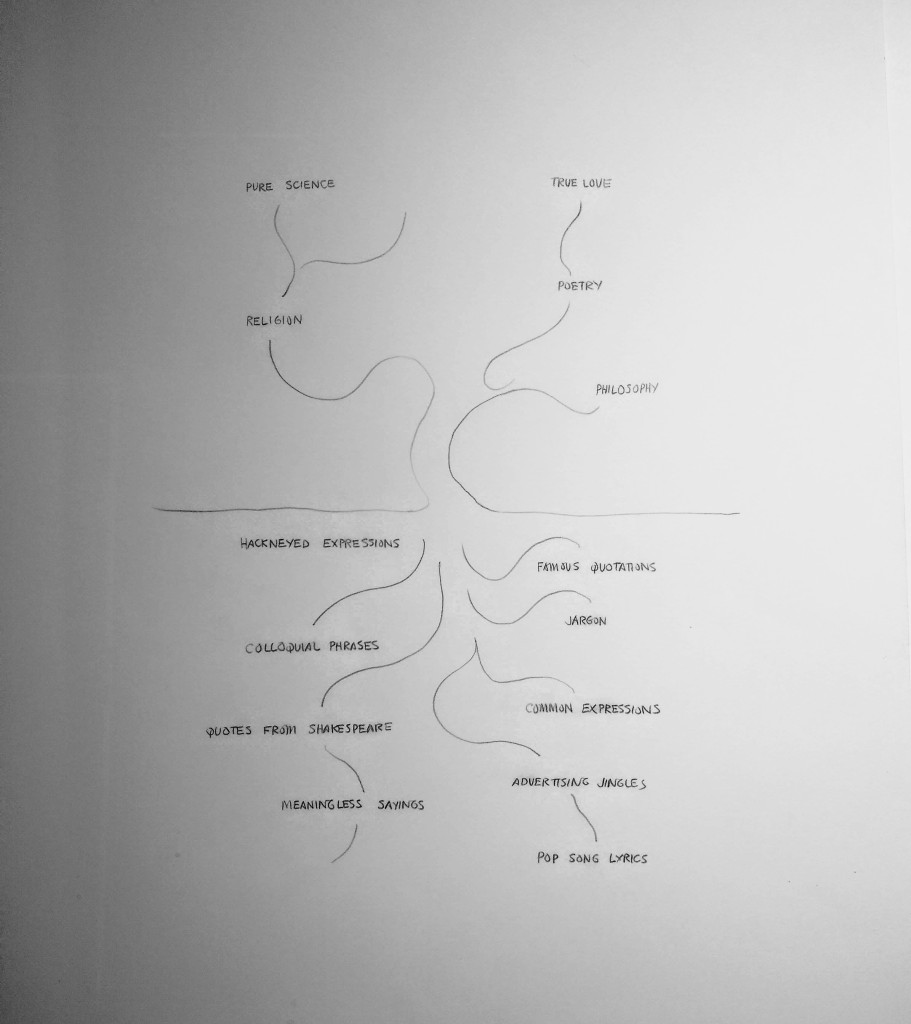
We ate lunch on the pedestrian walk in downtown Roskilde, near the historic buildings and church, then made our way downhill to the Viking Ship Museum. The scale of the salvaged boats alone was worth the price of admission; it was even more impressive to learn about how they were assembled from thousands of wooden pieces discovered in local Roskilde Fjord. (Fjord-in-name-only, I should write. Since the afternoon I biked there, I’ve learned it’s a totally different body of water. …?)
The museum, as it stands now, is in danger. The area’s been flooded before, explaining the wooden supports up against the windows, and the waters nearby are expected to rise again. One display outlined the risks of staying in Roskilde and the need to find another permanent home for the ships. It’s pretty ironic, Dad pointed out, that these ships were built for the water, and preserved under the water, and now it could be the water that ruins them. He started into an Alanis Morissette parody: “It’s like raaaa-aaaain! On a Viking ship!…“

The folkehøjskole welcomes mealtime guests, so Dad and I ate one more time together–tomato soup with warm bread and fried potato skins, a good winter dinner. We got to take part in a ROFH tradition: guests get introduced by their invitees in front of the full dining hall, who all greet them with a “Hej!”
Dad flew out Wednesday morning, texting me proudly that he’d ordered his breakfast in Danglish. I rarely get homesick while traveling, but having him here for just a few days reminded me how much I’ll miss my family until May. I’m thankful Dad picked here as his first real across-the-Atlantic trip, and that the surprise gusts and Monday shutdowns didn’t scare him too much.
The National Art Gallery
I had places I wanted to explore for the rest of the week, but my time fizzled away at home between summer internship applications and readings that needed a second look. I’m more than OK with that. It was nice to take time to wake up at 11am or read a book I’d been eyeing from cover to cover; perhaps these are things I would have done regardless, since Roskilde got hit with a nasty multi-day drizzle.
I did get in one more day trip, though, to the Statens Museum for Kunst, Denmark’s national art gallery. I picked up the best punch-card deal, too: the Parkmuseerne pass, which gives entry to 6 different museums for 50% off their usual combined price. One down, five to go–good thing I have two more months left here.
One of the very first spaces inside is a long hallway with plaster casts of ancient Greek statues, combined with a contemporary artist’s light installation. This made for some fun photos:

All the art discussions in my Myth & Reason class may be slowly breaking down my brain. There were several rooms I entered and instantly thought, This doesn’t work as art anymore. But one space, dedicated to Danish art about the human body, really moved me. The room starts in the late 19th century, when optimism was trending for artists; there’s many paintings celebrating the potential and proportions of the human form. As the walls shift into the early 20th, at the cusp of disease outbreaks and World War I, the figures look increasingly disheveled and somber.

In all honesty, the mood of those early-20th-century paintings matches my own as I finish this post up. I’m a little anxious, and like the subjects of several of those pieces, it’s about sickness. Travel week ended with the first cases of the coronavirus diagnosed in Denmark, while my friends were pulled out from their abroad programs in Italy. I’m lucky, too, that this is the worst I’ve had to worry about, considering the life-or-death stakes in several other countries.
A discordant way to finish, but an important reminder. It was refreshing to have a full week off, along with a visit from family, in my home here, but I shouldn’t take a full break from being aware of what’s going on around the world. I guess I’ll be going into this next week one day at a time, finding comfort in the limitless interesting things right in Denmark.
(Header image: a stone labyrinth outside the Viking Ship Museum, overlooking the Roskilde “Fjord”. Post title borrowed from The Raincoats.)




